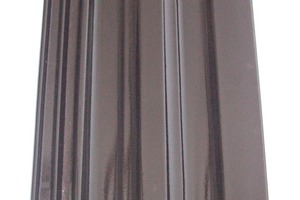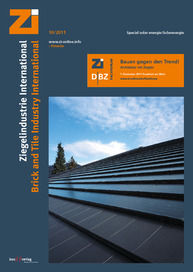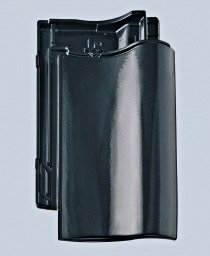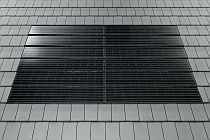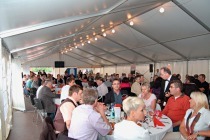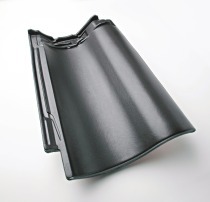Braas‘ brand-new Granat 13V roof tile – the outstanding result of constructive cooperation
Carl Gustav Magnusson, jury chairman in the “Buildings” category at the 2011 iF Product Design Awards event, summed it up nicely in his introductory motif: “Because installation methods remained unchanged for quite a long time, it was very difficult for progressive designs to catch on in the building sector. Nevertheless, there were always many interesting contributions to be evaluated, and many of them deserved our respect and recognition. Some of them amounted to worthwhile, if unspectacular, improvements, while others attempted to redefine their own category.”[1] The Granat 13V roof tile by Braas, for example, which won the 2011 iF Product Design Award, is one such worthwhile improvement.
The main focus of attention in redesigning the Granat 13 was to give it more head adjusting range and make it much more flexibly deployable. In terms of market acceptance, the additional flexibility is very important for roof renovation jobs, heritage-protected rehabilitation projects and even new buildings. Another important point was to improve the tiles‘ rainproofness by optimizing their head and foot interlocks, as confirmed by the results of wind-tunnel trials. The design of the Granat 13V is characterized by the two-troughs‘ high degree of symmetry. This is particularly important, because the Granat 13V can therefore be installed in straight and staggered bonds, and the finished appearance is harmonious in either case.
A number of framework conditions made the job of redesigning the Granat 13V especially challenging. For one thing, the joint task force formed by Monier Braas GmbH and Franz Banke GmbH had to ensure, that the new Granat 13V would fit well onto existing-type drying supports and cranks and therefore be optimally supported during drying and firing. That applied not only to the normal roof tile, but also to the various accessories: right and left verges, half-length tiles, dormer ventilators and double-bead tiles. That, of course, requires lots of testing and attention to numerous details and limiting factors. With the aid of modern 3D-CAD software, though, along with all the necessary know-how and experience on the part of both Monier Braas GmbH and Franz Banke GmbH, many good solutions were worked out together. Naturally, such a task entails one or the other compromise, but when client and supplier work together as productively as they did in this project, that can be very conducive to good results.
Any new theoretical design has to proof itself in practice, of course, particularly when the natural raw material clay is involved. Consequently, the design development process included a number of test runs with subsequent analysis and appropriate optimization of the models. As usual in Germany and northern Europe, the tiles are produced with the aid of plaster moulds, so alterations to be made on the model can be effected by altering the master model accordingly. With their integral design and production prowess, Franz Banke GmbH is optimally positioned for that kind of work. Each and every change is CAD-designed and can be implemented immediately, quickly and simply in the manufacturing network situated directly downstream. As such, the learning cycles associated with any such development process were able to be concluded very rapidly.
The joint development team sees their 2011 iF Product Design Award for the Granat 13V as an acknowledgement of work well done, confirming that innovations and product modifications can yield good results despite difficult boundary conditions. In addition to winning the 2011 iF Product Design Award, their Granat 13V has also been nominated for the 2012 German Design Award, which is bestowed once each year by the German Design Council.
[1] iF product design yearbook 2011, vol. 2, p. 264

